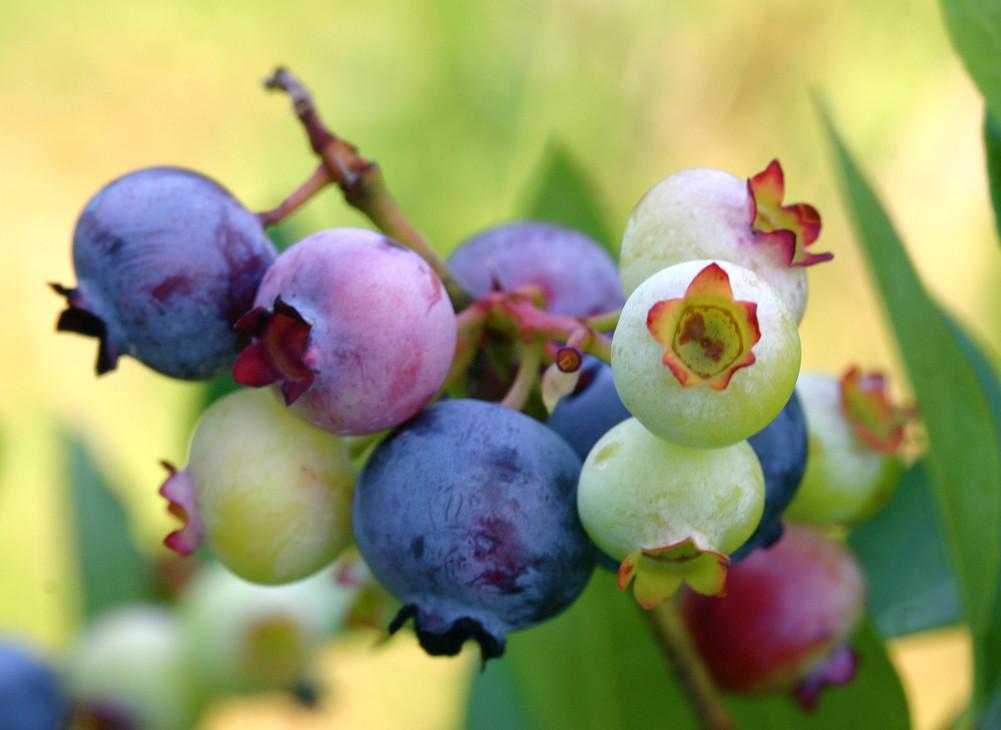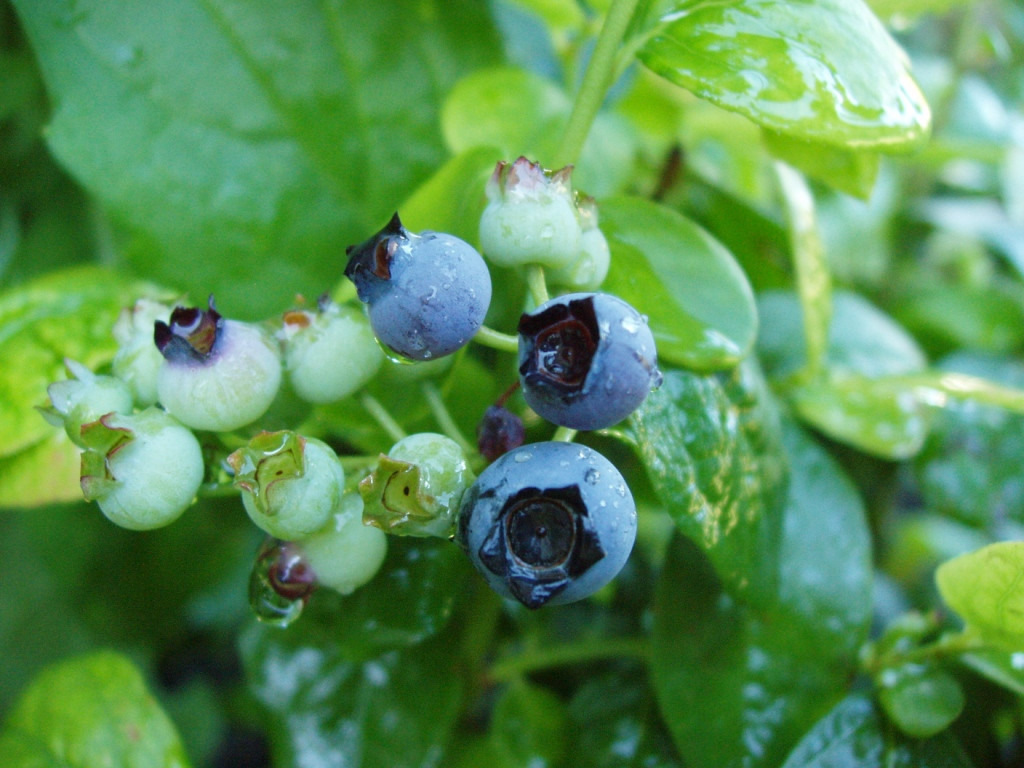Blueberry
Scientific name: Vaccinium cyanococcus
Climate: Cold, temperate
Plant Description: Blueberries are shrubs varying in size from 10 cm tall to 4 m tall; the smaller species are known as "lowbush blueberries" which grow wild, and the larger species as "highbush blueberries" that are cultivated.
The leaves of highbush blueberries can be either deciduous or evergreen, ovate to lanceolate 1–8 cm long and up to 3.5 cm broad.
The flowers are bell-shaped, white, pale pink or red.
The fruit are small (5–16 millimeters) in diameter and feature a flared crown at the end. They are green in color when they first appear, then deepen to purple and blue as they ripen.
The species are native to North America, blueberries are confused often with bilberry from the same family but native to Europe.
Cultivation: You can propagate blueberry from seeds and cuttings, it may take at least 2 to 3 years for the first harvest and up to 10 years to reach its mature size. In nature Blueberry bush can be self-pollinated but if you have more than one plant for cross-pollination it will produce much better.
They require full sun and lots of water, specially in summer. They prefer a moist acid sandy soil but not soggy, it is suggested to mulch them well with a pine bark mulch to keep moisture.
Blueberries have a shallow root system which does not require a lot of space, for which it is possible to grow them in containers, the best time to plant them is spring and fall. You need to water the plant regularly to ensure the soil is always moist
Avoid any serious pruning in the first 3 years–just snip away only the weak, damaged, and diseased shoots. After that pruning will encourage new growth and will result in larger earlier fruit.
The best time to prune is early or mid-spring when new buds appear.Prune in winter by cutting back old dry stems. From the 4th year, you can start trimming the oldest, unproductive stems.
 Uses: Blueberries were consumed for centuries by First nations native americans.
Uses: Blueberries were consumed for centuries by First nations native americans.
The majority of its health benefits are derived from the high concentrations of anthocyanins, polyphenolic compounds, flavonols, and tannins and other phytonutrients, as well as vitamin A, C, B and K, fiber, potassium, calcium, manganese, zinc, and iron.
They also have one of the highest antioxidant levels that helps in the reduction of oxidized LDL in the body.
Blueberry tea is believed to protect against cancer, strengthen heart health, increase bone density, boost the immune system, prevent macular degeneration, improve cognitive function, and improve kidney health.
Pests and diseases: Birds love them, blueberry maggot, Insects will make it bother. Powdery mildew is a common disease.
References:
(BASc, J. B. S. (2020, July 13). 9 Amazing Benefits of Blueberry Tea. Organic Facts. https://www.organicfacts.net/health-benefits/herbs-and-spices/blueberry-tea.html
Blueberry - New World Encyclopedia. (n.d.). New World Encyclopedia. Retrieved July 22, 2020, from https://www.newworldencyclopedia.org/entry/Blueberry
Leech, M. J. S. (2041, February 19). 10 Proven Health Benefits of Blueberries. Healthline. https://www.healthline.com/nutrition/10-proven-benefits-of-blueberries
(2020, June 16). Growing Blueberry bush in containers | How to grow Blueberry plant. NatureBring. https://naturebring.com/growing-blueberry-containers-grow-blueberry/
Stockigt, S. (2019, May 30). Blueberry (Cyanococcus). Life Is a Garden. https://www.lifeisagarden.co.za/berry-blueberry-powder-blue/
En español: Arándano azul

